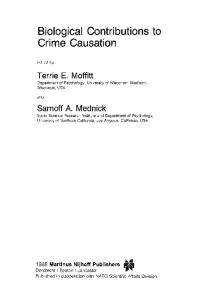Contributions to the ecology of halophytes
The ecology of halophytes has a wide scope of interest, appealing to people of many disciplines. It covers widely different fields such as climatology, soil science, phytogeography, adaptive biology and agriculture. Ecologists study these specialized plan
- PDF / 57,837,176 Bytes
- 273 Pages / 325.984 x 448.573 pts Page_size
- 25 Downloads / 356 Views
Tasks for vegetation science 2 Series Editor
HELMUT LIETH University of Osnabruck, F.R.G.
DR W. JUNK PUBLISHERS
THE HAGUE / BOSTON / LONDON 1982
Contributions to the ecology of halophytes edited by
DAVID N. SEN and KISHAN S. RAJPUROHIT
DR W. JUNK PUBLISHERS
THE HAGUE
I BOSTON I LONDON 1982
Distributors: for the United States and Canada Kluwer Boston, Inc. 190 Old Derby Street Hingham, MA 02043 USA for all other countries Kluwer Academic Publishers Group Distribution Center P.O. Box 322 3300 AH Dordrecht The Netherlands
Library of Congress Cataloging in Publication Data
ce
Main entry under title: Contributions to the ecology of halophytes. (Tasks for vegetation science; 2) Includes bibliographies and index. I. Halophytes. 2. Botany- -Ecology. I. Sen, David N., 1934II. Rajpurohit, Kishan S. III. Series. QK922.C66 581.5'265 81-12381 AACR2 ISBN-I 3:978-94-009-8039-6 eISBN-13 :978-94-009-8037-2 DOl: 10.1007/978-94-009-8037-2
Copyright
© 1982 by Dr W. Junk Publishers, The Hague, The Netherlands
All rights reserved. No part of this publica lion may be reproduced, slored in a retrieval system, or transmitted in any form or by any means, mechanical, photocopying, recording, or otherwise, without the prior written permission of the publisher, Dr W. Junk Publishers, P.O. Box 13713, 2501 ES The Hague, The Netherlands
Preface
The ecology of halophytes has a wide scope of interest, appealing to people of many disciplines. It covers widely different fields such as climatology, soil science, phytogeography, adaptive biology and agriculture. Ecologists study these specialized plants in relation to estuarine ecosystems, biology of dominant genera, germination ecology, water relations, salt secretion, and senescence. The present volume is divided into three parts and attempts to elucidate new aspects of the problems faced by this special group of plants. It tries to give the reader an overall view of saline environments and the ecology of plants found therein. In the first chapter of part one Zahran presents the halophytic vegetation of Egypt, which includes the inland and the littoral (Red Sea and Mediterranean Sea) salt marshes. The plants he describes have been classified as succulents, excretives and cumulatives, according to their adaptability to saline soils and according to their different life-forms. The second chapter throws light on the estuarine ecosystem ofIndia. The estuaries are described by Joshi, and Bhosale as being rich in diversity of mangrove species. Making varied use of estuarine ecosystems is not only possible, but also essential because they are the meeting point between terrestrial and marine life. In chapter three a listing of mangrove species from the entire world, separated for the main regions of biogeographical interest is presented. The term 'mangrove' has been distinguished into: (a) mainly woody plant formations, distributed in the tropical or sub-tropical, tidal zone between the lowest and highest tide water mark; and (b) plant species of this formation. Barth calls 'mangal', 'ma











